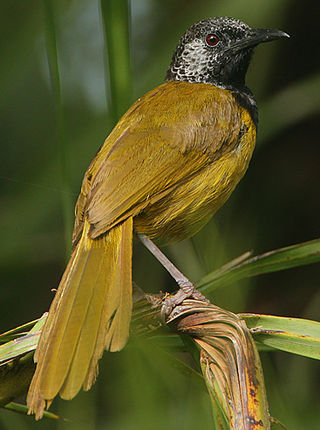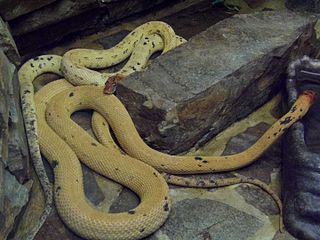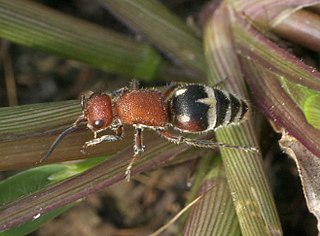
The dark-fronted babbler is an Old World babbler found in the Western Ghats of India and the forests of Sri Lanka. They are small chestnut brown birds with a dark black cap, a whitish underside and pale yellow iris. They forage in flocks in the undergrowth of forests constantly making calls and uttering alarm calls when disturbed.

The oriole warbler is a large warbler in the family Cisticolidae, and the only member of the genus Hypergerus. This bird is a resident breeder in west Africa from southern Senegal to Cameroon.
Chaul is a historic town located in the Raigad district of Maharashtra, India. The Korlai Fort is located nearby.

The black-headed saltator is a seed-eating bird in the tanager family Thraupidae. It breeds from central Mexico to eastern Panama.

The imperial shag or imperial cormorant is a black and white cormorant native to southern South America, primarily in rocky coastal regions, but locally also at large inland lakes. Some taxonomic authorities, including the International Ornithologists' Union, place it in the genus Leucocarbo, others in the genus Phalacrocorax. It is also known as the blue-eyed shag, blue-eyed cormorant and by many other names, and is one of a larger group of cormorants called blue-eyed shags. The taxonomy is very complex, and several former subspecies are often considered separate species.

The black-capped siskin is a species of finch in the family Fringillidae. It is found in Mexico and Guatemala. Its natural habitats are subtropical or tropical moist montane forest and heavily degraded former forest.

The black-hooded sierra finch is a species of bird in the family Thraupidae.

The cream-throated white-eye is a species of bird in the family Zosteropidae. It is endemic to the northern Moluccas.
Paroplocephalus is a genus of venomous snake in the family Elapidae. The genus is monotypic, containing only the species Paroplocephalus atriceps, the Lake Cronin snake. The species is endemic to western Australia.
Atriceps Island is the southernmost of the Robertson Islands, lying 5.6 kilometres (3 nmi) south of the south-east end of Coronation Island in the South Orkney Islands of Antarctica. The island has been identified as an Important Bird Area by BirdLife International because it supports a breeding colony of imperial shags, after which the island was named in 1948–49 by the Falkland Islands Dependencies Survey, with 524 pairs recorded in 1988.

Camponotus atriceps, previously referred as C. abdominalis, is a species of carpenter ant, endemic to the Americas.

The Hawaiian blackhead triplefin, also known as the Hawaiian triplefin in Hawaii, is a species of triplefin blenny in the genus Enneapterygius. It is a tropical blenny found in coral reefs in the Pacific Ocean, from the Hawaiian Islands, French Frigate Shoals, Laysan Island, and Midway Atoll. Blennies in this species swim at a depth range of 1–23 metres, and inhabit dead coral and rock.

Exomalopsis is a genus of bees in the family Apidae. They occur in the Western Hemisphere.
The Rwenzori hill babbler is a species of passerine bird in the family Sylviidae that is found in Africa.

Spalerosophis atriceps, the Black headed royal snake or Fischer's royal snake, is a species of snake in the family Colubridae. The species is endemic to South Asia.
Nupserha atriceps is a species of beetle in the family Cerambycidae. It was described by Stephan von Breuning in 1948.

Timulla is a genus of velvet ants in the family Mutillidae. There are almost 200 described species in Timulla.

Timula dubitata is a species of velvet ant of the family Mutillidae. It belongs to the Timulla genus.

Timulla vagans is a species of velvet ant, of the Timulla genus. The species lives in the United States, Mexico, and Canada.

Timula ferrugata is a species of velvet ant, of the Timulla genus, the species lives in the southeastern United States. The species has an orange color on almost all of its body, the beak and rear are brown and dark orange.














